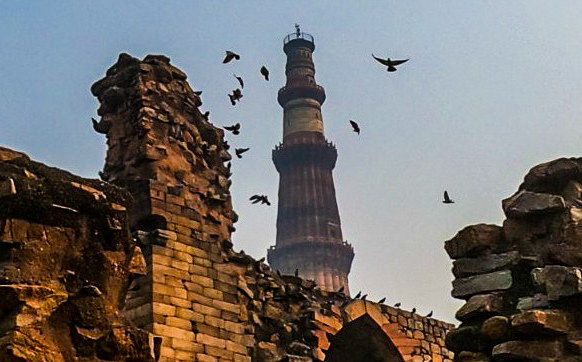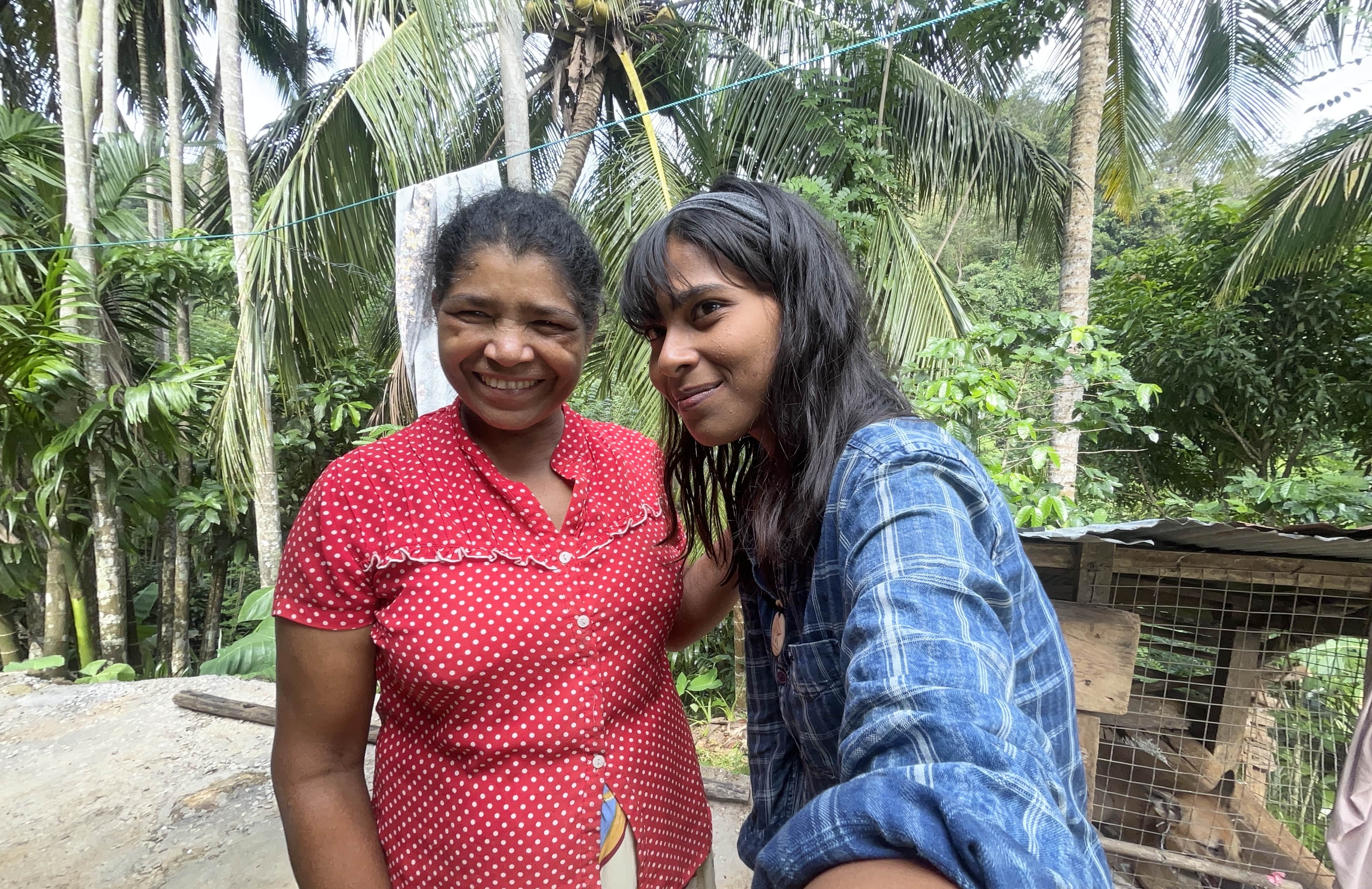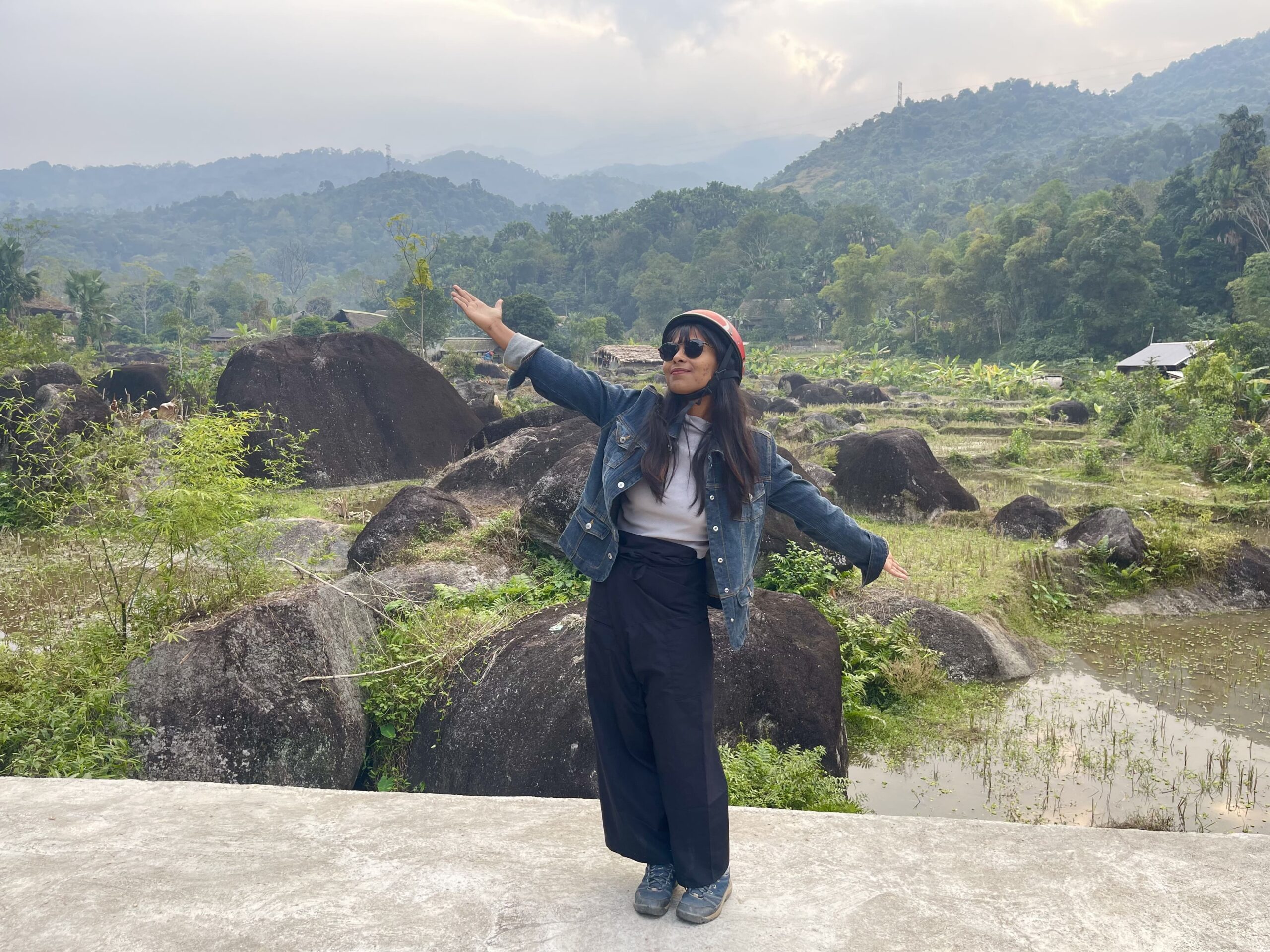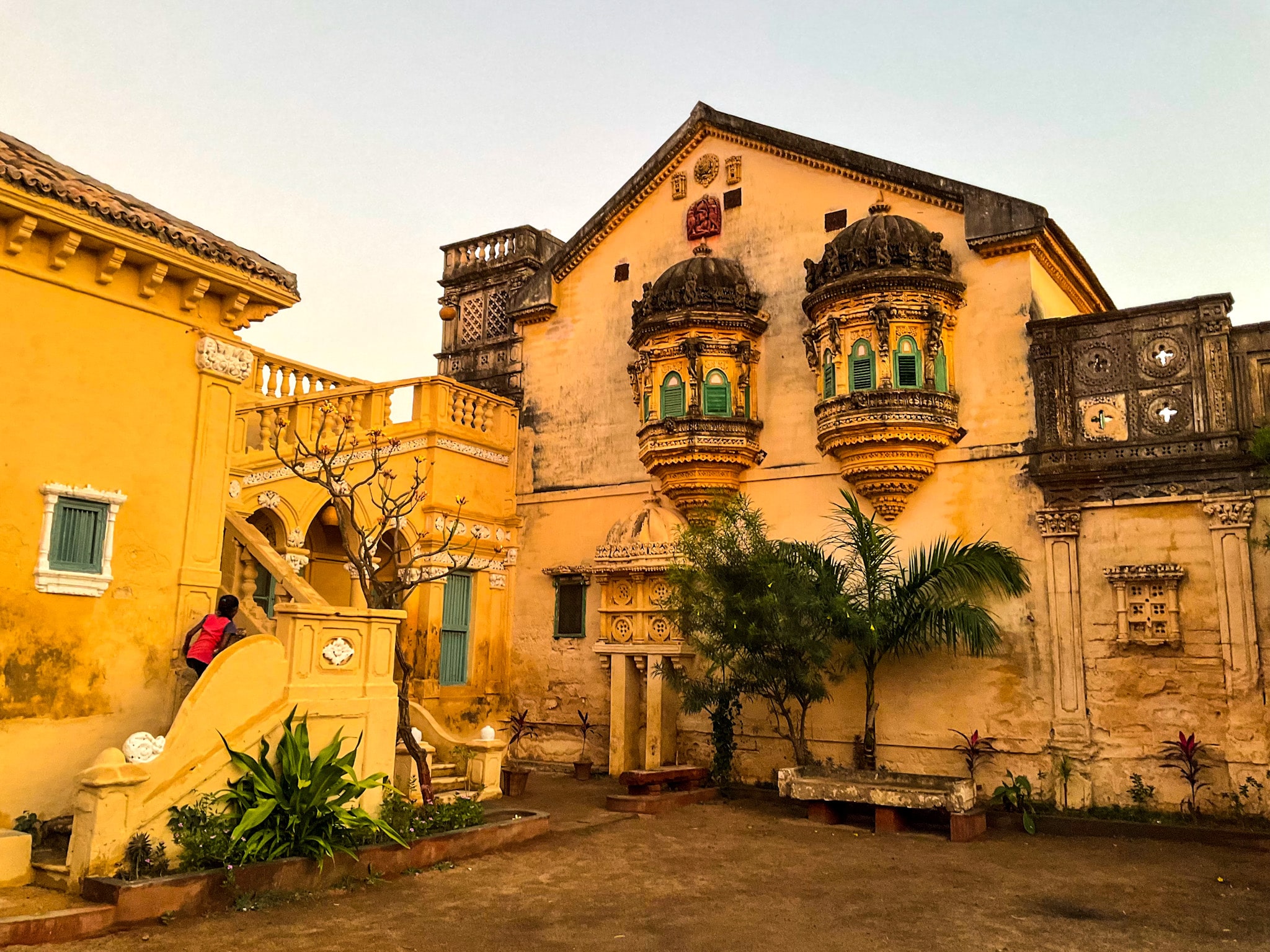In this article, you will know some of the best places to visit in Delhi, the Capital of India. This is a heritage walk down the historical monuments (now tourist places) paramount to antecedents of India’s multi-ruling past.
‘Air pollution severe in Delhi, North India’, ‘5 former defence personnel come together to tackle air pollution’, ‘Smog covers NCR’ – these are the headlines nowadays in the leading newspapers. Yes, the pollution is relentless, with red alerts taking over the resultant serenity for years now (Read how the Capital’s pollution has reached ‘severe’ in 2024).

But, walking the streets opens up two sides of the road. The best and the worst. The monuments and the garbage. I had been walking all over the city for a week, without minding the pollution or the rush of traffic, except for a few times I had to opt for Rapido.
The kids on the streets prepare the chain of light bulbs, the old men in Old Delhi throw themselves inside the morning newspaper, and the graffiti on the walls come in wavy colours. Part of the reason I could bear this obnoxious city is that I am a tourist, impressed by the reminders of Islamic architecture, the sensation of the culminated history, and of course, the pigeons, at the circle of Connaught Place, beside the woman with the rainbow umbrella.
From Tomars to Chauhans, from Sultans to modern-day rulers, this ancient city has survived through the rough edges of time, and that eerie sense of retribution is splattered all over. And experiencing the good and the bad is part of the trade. But the Capital of India is a curious resort for tourists, and here are the best 25 places to visit in Delhi!
What are the Best Places to Visit in Delhi
Hauz Khas Fort, or the lanes of the old parts – the historical monuments are what keep this half-baked city still relevant!
1. Hauz Khas Village
Nearest metro station – Green Park on the yellow line
Timings for Hauz Khas Fort – 8 am to 7 pm
Parking – Rs.100

The remnant of medieval times, Hauz Khas Village is pioneered as the city-hub for electric nightlife at the cafes, pubs, and bars.
But Hauz Khas Fort. The square-shaped doors at the edge of the fort, the stairs vanishing behind the dark chambers of unmortified secrets, and how the stones, in the meantime, fit in in anomaly, in gaps – Hauz-Khas Fort inflicted a certain flair of romance in me. Did the lovers’ promises on the walls have anything to do with it?
Inside the premises, there’s Feroz Shah’s Tomb, a madrasa, a three-domed building with graves. In the 1350s, before his death, Feroz Shah conceptualized and built his tomb in this very place. The top of its dome serves as the highest point in the Hauz Khas area, one of the most touristy places in Delhi. This is where Feroz Shah rests in eternal peace alongside his relatives. The three-domed structure has traces of graves in it. It presumably was a meeting hall or an assembly room, as assumed by the historians, basing the fact on the vast size and shape of the structure.
2. Delhi-Famous Qutub Minar

Timings – 10 am to 5 pm (except Sunday)
Nearest metro station – Qutub Minar on yellow line
Ticket – Rs. 40 for Indian tourists, Rs. 600 for foreign tourists, free for children up to 15 years old
Despite having differing opinions, the historians have reclined firmly on ‘Qutub Minar being a victory tower’ in the Mehrauli area, built over the ruins of the first city of Delhi, Lal Kot. A grand initiative by Qutub Ud Din Aibak, Qutub Minar is the second tallest monument in the Capital of India. The entire Qutub Complex has the blueprints of its ancient belonging to archeology.
Alai Darwaza, Alai Minar, Quwwat-ul-Islam Mosque, Sanderson’s Sundial, Tomb of Imam Zamin, Iron Pillar – the Qutub Minar complex resonates with the change in power, the change in history. From Aibak to his son-in-law Illtutmish, rounded up by Firoz Shah Tughlaq, Mehrauli has been an arena of grave historical significance.
Named after Alauddin Khilji, dating back to 1311 AD, Alai Minar is an unfurnished monument built with the intention of fashioning a monument twice the size of Qutub Minar. Khilji had already doubled the size of Quwwat-ul-Islam Mosque in Delhi and wanted to proportionate the new monument accordingly. Due to his sudden demise, the monument remained unfinished, particularly since none of his successors showed any interest in working on it further.
3. Quwwat-ul-Islam Mosque

Timings – 10 am to 5 pm
Nearest Metro station – Qutub Minar on yellow line
Adorned in the grandeur of red sandstone, grey quartz, and white marble, Quwwat-ul-Islam in Delhi stands as one of the oldest mosques in India, truly the ‘Might of Islam’. The initial structure was the brainchild of Qutub-ud-din Aibak, the further expansion was carried forward by Illtutmish and Alauddin Khilji. Qutub Minar served the purpose of the monument, to call out devotees for azaan or prayers.
4. Agrasen Ki Baoli

Timings – 7 am to 6 pm
Nearest metro station – Rajiv Chowk on blue and yellow lines
Baoli, or stepwell, is an underground structure for storing up water, solely to cope with seasonal fluctuations in water availability. Built by Raja Agrasen, it comprises 108 steps, leading to the receding void. Dating back to the late Tughlaq or Lodi period, the stepwell is a brilliant work of historical architecture.
Also read – 15 Best Places to Visit in Jaipur Rajasthan
5. Gurudwara Bangla Sahib

Timings – Open 24 hours
Langar Timings – 9 am to 3 pm, 7 pm to 10 pm
Nearest metro station – Shivaji Stadium on Airport Line, Rajiv Chowk on blue and yellow lines (2.5 km), Patel Chowk on yellow line (2 km)
One of the famous tourist destinations in Delhi, Gurudwara Bangla Sahib Ji, this Sikh Temple of reverence goes back to the mystic nostalgia of the 8th Sikh Guru in prominence. The water of the sarovar is believed to have healing powers, the story roots back to the Guru who turned the water of the pond into holy nectar by dipping his feet into it and thereby curing the cholera-infused patients.
6. Iron Pillar

Timings – 10 am to 5 pm
Nearest metro station – Qutub Minar on yellow line
Constructed by Chandragupta II, Iron Pillar is considered an archaeological wonder worldwide, for its preservation of itself the way it has always been, that is to say, despite being thousands of years old, the pillar has never detected any crust or rust. Its high resistance to corrosion is a living example of crystalline iron. Hydrogen phosphate hydrate on the high-phosphorus-content iron has sheltered the pillar from catastrophic damages, even during a cannonball strike.
7. Isa Khan’s Tomb

Timings – 10 am to 6 pm
Ticket – Rs. 10 for Indian tourists, Rs. 250 for foreign tourists, Rs. 25 for video filming
Nearest metro station – Jawaharlal Nehru Metro station on violet line
Isa Khan, a noble in the court of Sher Shah Sur, built his tomb and a mosque in this enclosure in Delhi. Pre-dating Humayun’s Tomb by only 20 years, the octagonal tomb has striking ornamentation in the form of canopies, glazed tiles, and lattice screens. Isa Khan’s Garden Tomb is the culmination of an architectural style used for royal tombs during the Sayyid and Lodi dynasties from the early 15th to the early 16th centuries. Until the early 20th century, a whole village had been settled in the enclosure.
The three-bay-wide mosque has a grand red sandstone central bay. It is located on the same premises as Humayun’s Tomb.
An enormous amount of work was put into it to remove some 325000 cubic feet of earth from the site in order to restore the landscape to its originality while being careful not to destroy any evidence. Today Isa Khan’s Tomb is one of the notable destinations in Delhi!
From Tomars to Chauhans, from Sultans to modern-day rulers, this ancient city has survived through the rough edges of time, and that eerie sense of retribution is splattered all over.
8. Humayun’s Tomb – A Must-Visit in Delhi

Timings – 10 am to 6 pm
Ticket – Rs. 10 for Indian tourists, Rs. 250 for foreign tourists, Rs. 25 for video filming
Nearest metro station – Jawaharlal Nehru Metro station on violet line
The main entrance to the World Heritage Site of the Tomb-Garden of Emperor Humayun symbolizes the Mughal reign with an ornamental six-sided star, a cosmic symbol. A precursor to the Taj Mahal, the mausoleum is the earliest example of Persian influence in Indian architecture. ‘Dormitory of the Mughals’, it earned its name because of its inhabitants, more than 100 graves. This structure is the first to use red sandstone and white marble in such abundance! The small canopies on the terrace were originally covered in glazed blue tiles, and the brass over the white marble dome is itself 6 m high.
Also read – A Local Perspective on the ‘City of Joy’ Kolkata
9. Purana Qila

Timings – 7 am to 6 pm
Ticket – Rs. 5 for Indian tourists, Rs. 200 for foreign tourists
Nearest metro station – Pragati Maidan metro on blue line
Purana Qila, or Pandavon-ka-kila, Delhi’s famous fort, is where Mahabharata begins its saga. The mound on which the fort stands is rumoured to have been the town of Indraprastha. After his return from Persia, Humayun resided here till his death and is believed to have repaired and reconstructed some portions of the citadel.
Among the existing buildings inside are Sher Shah’s Mosque and a tower known as Sher Mandal. Its principal gateways are on the North, West, and South and crowned with Chhatris and are known respectively as Talaqi, Humayun, and Bara Darwazas.
10. Connaught Place

Nearest metro station – Rajiv Chowk metro on yellow and blue lines
The paramount commercial and financial hub of New Delhi, Connaught Place (CP) is preferably the most ‘happening’ version of the Capital of India. Famous International stores, food chains, restaurants, and bars, along with contemporary art galleries, antique theatres, the first ice cream parlour in this town, and whatnot.
11. Charkha Museum

Ticket – Rs. 10
Nearest metro station – Rajiv Chowk on yellow line
Promoting the long-lined Khadi lineage of India, Charkha Museum in Delhi was established in collaboration with Khadi and Vintage Industries Commission in 2017. The museum is right in the middle of the famous Connaught Place, with its huge model of the Indian Charkha. With every ticket purchased, you get a Khadi handkerchief as a souvenir.
The museum is tiny in size, exhibiting 14 vintage Charkhas (spinning wheels), together with a display of Gandhiji’s journey through diverse phases of his life.
12. Jantar Mantar in Delhi

Maharaja Jai Singh II, whose assortment of five renowned and respective observatories in Jaipur, Ujjain, Varanasi, Mathura, and Delhi, was a figure keenly observant of astronomical phantoms. The studies of time and space were his forte. Jantar Mantar allocates 13 architectural astronomy instruments used in compiling astronomical tables and comprehending the workings of the sun, moon, and planets.
Samrat Yantra, Misra Yantra, Jayaprakash Yantra, Rama Yantra, Shasthansa Yantra, Kapala Yantra, and Rasivalya Yantra are placed inside the compound.
Also read – Travelling across Punjab India – Chandigarh, Amritsar And More!
13. Shri Digamber Jain Temple
Nearest metro station – Jama Masjid station on violet line (300m), Chawri Bazaar station (500m) in Delhi.
Shri Digamber Jain Temple, just opposite Red Fort, was built in the 16th century. The original gateway is of buff-coloured sandstone and has many floral motifs and carved niches. The getaway leads to a corridor which further places you in a large Central hall, with coloums and arch openings.
14. Mumtaz Mahal
Nearest metro station – Jama Masjid station on violet line (300m), Chawri Bazaar station (500m)
Emperor Shah Jahan’s wife Mumtaz was the royal occupant of the royal palace, Mumtaz Mahal, now grim in the loss of age-old serenity. In its days of glory, it was a part of the imperial seraglio and was also called ‘Chhota Rang Mahal’. It is situated at the Southern end of the extant row of royal palaces along the eastern wall. On its South lies the Asad Burj and to its North at a distance is situated the Rang Mahal.
It was used as a military prison by the British after the first Indian freedom struggle owing to which its original appearance has been altered. Mumtaz Mahal is part of the Red Fort complex in Delhi.
15. Delhi Red Fort
Timings – 9:30 am to 4:30 pm
Ticket – Rs. 35 for Indian tourists, Rs. 500 for foreign tourists
Nearest metro station – Jama Masjid station on violet line (300m), Chawri Bazaar station (500m)

Red Fort is a historical artifact in the Chandni Chowk area. Upon the relocation of the capital, from Agra to Delhi, Shah Jahan bricked the fort as the center residence of the Emperors of the Mughal dynasty. An elaborate work of red sandstone, glossing over the features of Indian, Persian, and Timurid forms of architecture, it sheltered the Emperors, and also made a floor for their political chaos. The designer of Red Fort also materialized the Taj Mahal in Agra.
Part of the reason I could bear this obnoxious city is that I am a tourist, impressed by the reminders of Islamic architecture, the sensation of the culminated history, and of course, the pigeons, at the circle of Connaught Place, beside the woman with the rainbow umbrella.
Nahr-i-Bihisht or ‘Canal of Paradise’ was an important feature of the fort. It provided a continuous supply of water, and the water would get distributed throughout the gardens and interiors.
Rang Mahal, Khas Mahal, Moti Masjid, Diwan-i-Am, Naubat Khana, Chhatta Bazaar are some of the distinct structures on the premises.
16. Jama Masjid
Nearest metro station – Jama Masjid station on violet line (300m), Chawri Bazaar station (500m)

The largest mosque in India, Jama Masjid of Delhi was built by Mughal Emperor Shah Jahan. Jama Masjid is a site to savour during the merriment of Eid, with hundreds of Muslims offering the morning Nawaz. Three getaways, four towers, and two minarets – Jama Masjid cost around one million rupees even in that era, taking six whole years to finish the construction.
Travellers are required to leave their footwear outside the mosque for a fee of Rs. 10. You will also be asked to cover your shoulders, so refrain from wearing non-conservative clothes of any sort.
17. Fatehpuri Mosque
Nearest metro station – Jama Masjid station on violet line (300m), Chawri Bazaar station (500m)

Just opposite the gigantic Red Fort, the road ends in Fatehpuri Mosque, the former abode of Fatehpuri Begum, one of Shah Jahan’s wives. The busy streets of Old Delhi slide by. The mosque curates a solitary place for itself.
Also read – Tourism in Gujarat Can Be Sustainable with These Places
18. Gurudwara Sis Ganj Sahib
Nearest metro station – Jama Masjid station on violet line (300m), Chawri Bazaar station (500m)
On its right, Red Fort stands erect. On its left, Fatehpuri Mosque claims itself. The Gurudwara is a yellow-and-white celluloid in the heritage of this town. Associated primarily with the ninth Sikh Guru of Sikh tradition, Gurudwara Sis Ganj is one of the nine Gurudwaras in Delhi.
19. Haveli Mirza Galib
Ticket – none
Nearest metro station – Chandni Chowk on yellow line, Chawri Bazaar on yellow line
The humble abode (and truly humble) of the 19th-century Urdu poet Mirza Ghalib, the haveli of Ghalib is tucked in such an ignorant corner that you won’t find it in an instant! This heritage building has now been redecorated with several antiques restoring Ghalib’s life, his couplets written in his own handwriting, handwritten letters, and a wee insight into his favourite food, hobbies, and interests.
20. War Memorial in Delhi – India Gate
Nearest metro station – Central Secretariat on yellow line
Alongside the Rajpath, the All India War Memorial is viable to be one of the largest war memorials in the country. India Gate is ideally packed with visitors during the Republic Day Parade hosted every year. With over 13,000 inscriptions on the wall, the memorial harks back to the Indian and British soldiers who lost their lives during the First World War and the Third Anglo-Afghan War.
Amar Jawan Jyoti is a paramount shrine-like structure made with black marble, cornerstoned just under the archway in Delhi.
21. NatIonal Rail Museum
Timings – 10 am to 5 pm (Except Monday)
Ticket – On weekdays, Rs. 50 for adults and Rs. 10 for kids (3-12 years). On weekends and govt holidays, Rs. 100 for adults and Rs. 20 for kids
Nearest metro station – Jor Bagh on yellow line

Vintage trains in a museum showcasing models of locomotives, engines, and the historical trains that occupied some parts of the history of India – National Rail Museum is a fun sight to spend a few touristy hours at. The vintage train complex can be toured in a ‘Toy’ or ‘Joy Train’ (there are other options as well). And believe me, you are never too old to board a ‘Joy Train’.
22. Mehrauli Archeological Park
Timings – 5 am to 6:30 pm
Nearest Metro Station – Qutub Minar on the yellow line

‘Dilkusha Complex’, a weekend retreat complex. Three historical structures formed by the Governor’s Resident Commissioner from the 1840s, Thomas Metcalf, that were part of the ‘Dilkusha Complex’, were crumbling behind exceeding vegetation in neglect. These three structures were The Metcalf Boat House, The Circular Movement and The Metcalf Guest House. Now this site in Delhi is called Mehrauli Archeological Park.
Alongside restoring heritage structures, they also rejuvenated the waterbody at Quli Khan Tomb. Spread over 200 acres in the Mehrauli neighbourhood, 100 historically significant monuments persist with the gloss of thousands of years of continuous occupation.
Markets in Delhi
1. Chandni Chowk
Timings – 10 am to 7 pm (Except Monday)
Nearest metro station – Chandni Chowk Metro Station

Old Delhi and Chandni Chowk are inseparable, from their ties to each other’s cores. It is one of the oldest markets in the oldest part of the town, established by the Mughal ruler Shah Jahan, in the 17th century. The wholesale market reeks of spices and oil-burnt street food.
‘Chandni Chowk’, which translates to ‘moonlit place’, was once a tree-dotted canal passing through its center, with the reflection of the moon soothing the daily nights. Now it’s a gorging marketplace with all varieties of jewellery, spices, candles, clothes, and lifestyle goods, that too at considerate discounts! The colours of spices construe the colours of Old Delhi. The spices elucidate its smell. The composition of all your senses is a composition for all your senses. Chandni Chowk, I can still smell your spices!
2. Dilli Haat
Timings – 11 am to 8 pm (Except Monday)
Nearest metro station – Sarojini Nagar Metro Station on Pink line

More of a vintage village fair, Dilli Haat is not to be skipped on your tour of the markets in Delhi. Even though there’re three Dilli Haats in total (Pitampura, Janakpuri, and INA), the INA one is the most diverse. Traditional crafts and handloom products such as sandalwood & rosewood carvings, decorated footwear, drapery, chandeliers, wool & silk fabrics, and jute & cane products – twin with mixed cuisines from every part of India.
3. Sarojini Nagar Market
Timings – 11 am to 8 pm
Nearest metro station – Sarojini Nagar Metro Station on Pink line

‘Crammed’ in its truest sense, Sarojini Nagar Market is the ultimate refuge for food stalls, roadside clothing, footwear, kitchen utensils, accessories & cosmetics. More aptly put as ‘bargain bazaar’, this is the most sought-after flea market where most of the “branded’ clothes cost Rs. 100.
Best Time to Visit Delhi

The best time to visit Delhi is somewhere between November to February. The weather begins to fall back more on a pleasant note, and you can enjoy this Capital city in the wintry mornings and evenings.
How to Reach Delhi
By Bus – Delhi is well connected by bus to cities like Jaipur, Agra, Alwar, Chandigarh, Amritsar, Shimla, Manali, Dharamsala, and Dehradun.
The main bus stands are the Interstate Bus Terminals, located at Kashmiri Gate, Anand Vihar, and Sarai Kale Khan. Apart from that, there’s Mandi House (near Barakhamba Road) which has regular air-conditioned bus services to hill stations in Himachal Pradesh, such as Shimla, Manali, Kasauli, etc.
The Bikaner House (near Pandara Road) bus station has regular air-conditioned buses to destinations in Rajasthan, such as Jaipur, Udaipur, and Jodhpur. The Majnu ka Tila bus stand (near the Vidhan Sabha Metro Station) has regular buses to Dharamsala. The Delhi Metro and local DTC buses and auto rickshaws conveniently connect these bus stands to the rest of the city.

By train – There are five major railway stations, namely New Delhi Railway Station, Old Delhi Railway Station, Nizamuddin Railway Station, Anand Vihar Railway Terminal, and Sarai Rohilla.
Metro line 2 also connects the New Delhi Railway Station to other parts of the city and is a convenient way to get into the city. There are also DTC buses (green and red coloured buses) which can take you into the city at a reasonable price. Apart from that you can also take auto rickshaws.
By air – The main airport is the Indira Gandhi International Airport and is very well connected to cities across India and the world. There are regular flights from Mumbai, Bangalore, Chennai, Hyderabad, Lucknow, Goa, Kolkata, Guwahati, and international destinations as well.
Also read – Is India Safe for Solo Female Travellers?
Where to Stay in Delhi
Dormitory for Budget Travellers
- Bunk Hostel. Located close to the Railway Station, in Paharganj, it’s the most budget-friendly accommodation you can ask for. (I spent a night there)
Couchsurfing in Delhi

This is the city I have Couchsurfed in the most number of times. The first time was just to stay for the day on my way to Rishikesh, and twice in my next seven days of sightseeing around Delhi.
- Naveen. Highly recommended.
- Kaushal, also highly recommended for an amazingly comfortable stay in his South Ex apartment.
- Aditya and Nisha, not recommended, even though it’s perfectly safe to be around the family, with their three-year-old kid. Aditya is enthusiastically hospitable, but his wife is enthusiastically not. But it’s a safe space for solo female backpackers to Couchsurf in Delhi.
Now that you have read through the article, click here to get all the best places to visit in Delhi on Google Maps.
What else would you add to your itinerary for a heritage walk down the Capital of India?
Support my solo adventures across the globe by joining the Patreon community!
Live the Adventure
Get weekly articles delivered to your doorstep and stay up-to-date with my new travel stories.





Leave a Reply